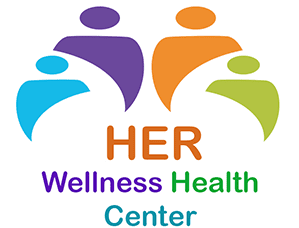Click HERE To Buy Rogaine Online ↓

Overview of Hair Growth Challenges and Solutions
Hair growth challenges range widely, from genetic predispositions to hormonal imbalances and even lifestyle factors like stress and diet. For those facing hair loss, solutions are numerous, but efficacy varies.
| Challenges | Solutions |
|---|---|
| Genetic Predispositions | Medications like Rogaine or Finasteride |
| Hormonal Imbalances | Hormone therapy |
| Lifestyle Factors | Diet modifications, stress management |
While some hail the advent of technological methods like laser therapy and hair transplants, others turn to natural remedies. Understanding the variety of options helps in choosing the most effective approach tailored to individual needs.
Rogaine: Mechanism and Effectiveness Unveiled

Rogaine, a popular over-the-counter treatment for hair loss, primarily works through its active ingredient, minoxidil. Originally used as a treatment for high blood pressure, minoxidil's hair growth side effects led to its topical use for stimulating hair follicles. When applied directly to the scalp, Rogaine helps increase the size of hair follicles and prolongs the growth phase of the hair cycle. This not only helps in reducing hair loss but also in regrowing lost hair over time.
Effectiveness varies among users, but many see noticeable results within three to six months of consistent use. However, it demands ongoing application to maintain hair growth benefits; discontinuing treatment often results in the gradual loss of newly regrown hair. While clinical studies back its efficacy, individual results can differ based on factors like the extent of hair loss and genetic predispositions.
Comparing Rogaine with Prescription Medications
When evaluating hair growth treatments, it’s crucial to compare Rogaine with various prescription medications. While Rogaine primarily utilizes minoxidil to stimulate hair follicles, medications like finasteride work by inhibiting the production of DHT, a hormone linked to hair loss. This difference in mechanisms means that their effectiveness can vary based on individual hair loss causes. Some users find combining Rogaine with a prescription treatment yields the best results. However, prescription medications often carry higher risks of side effects, making Rogaine a preferred option for many seeking a tolerance-friendly solution.
Natural Remedies: Do They Stand up to Rogaine?

When exploring the realm of natural remedies, options such as essential oils, herbal supplements, and dietary changes emerge as popular contenders. Essential oils like rosemary and peppermint are renowned for their potential to stimulate hair follicles. Herbal supplements, particularly those containing saw palmetto, are believed to block DHT, a hormone linked to hair loss. Moreover, incorporating nutrient-rich foods and vitamins like Biotin can promote healthier hair growth.
However, the efficacy of these natural remedies often varies significantly among individuals, and their scientific backing is relatively limited when compared to Rogaine. Rogaine, with its active ingredient minoxidil, has undergone rigorous clinical trials and is FDA-approved, ensuring a more consistent and proven efficacy in stimulating hair growth.
That said, natural remedies might appeal to those seeking a holistic approach, minimal side effects, and lower costs. Nonetheless, many find that these alternatives often fall short when it comes to delivering substantial and reliable results, especially in severe cases of hair loss. Balancing the benefits and limitations of natural remedies against the proven track record of Rogaine is essential for anyone tackling hair growth challenges.
Technological Advances: Laser Therapy and Hair Transplants
When considering alternatives to Rogaine, technological advancements like laser therapy and hair transplants offer promising solutions. Laser therapy utilizes low-level lasers to stimulate scalp circulation and hair follicles, aiming to promote hair growth with minimal side effects.
Below is a comparison table between laser therapy and hair transplants:
| Solution | Method | Effectiveness | Side Effects |
|---|---|---|---|
| Laser Therapy | Low-level light | Moderate to High | Minimal |
| Hair Transplants | Surgical | Very High | Moderate |
Hair transplants, on the other hand, provide a more permanent solution by relocating hair follicles from one part of the scalp to another. While these procedures offer high effectiveness, they come with higher costs and more recovery time compared to non-invasive methods.
User Experiences and Testimonials: Rogaine Vs. Alternatives
Many users report significant hair regrowth and thickening with Rogaine, noting visible results within a few months of consistent use. They appreciate its ease of application and the scientific backing of its active ingredient, minoxidil. However, some admit to initial side effects like scalp irritation, which typically subside over time.
In comparison, alternatives like natural remedies receive mixed reviews. While some users find them beneficial with fewer side effects, others see minimal improvement. Prescription medications often garner praise for their potency but come with concerns about long-term use and potential adverse reactions. Technological solutions like laser therapy and hair transplants are lauded for their effectiveness but critiqued for high costs and invasiveness.
